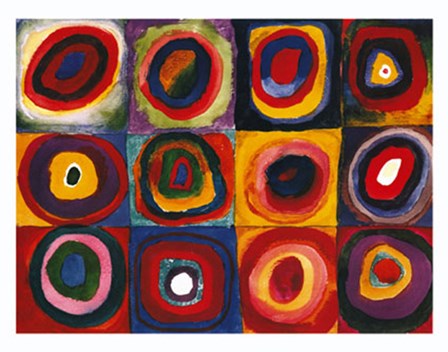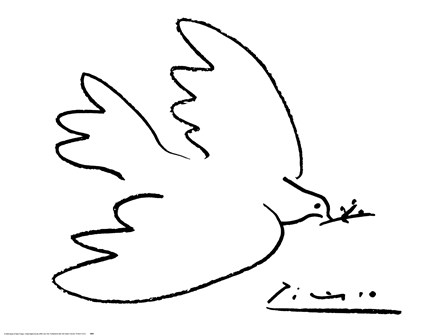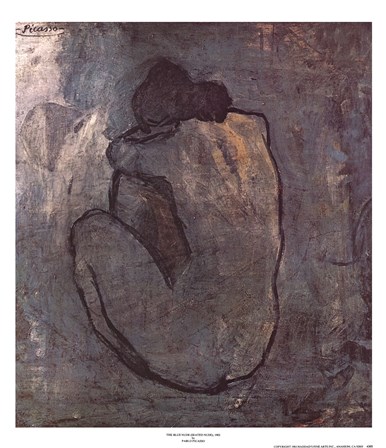by Fulcrum Gallery Staff
22. October 2013 15:02

Pablo Diego José Francisco de Paula Juan Nepomuceno María de los Remedios Cipriano de la Santísima Trinidad Martyr Patricio Clito Ruíz y Picasso (25 October 1881 – 8 April 1973) showed artistic ability at an early age, and when he began to study art seriously in Barcelona and Madrid, he was already a skilled painter.
In the early 1900s he visited and eventually settled in Paris, where he was part of a vibrant artistic community that included Gertrude Stein. Although greatly influenced by other artists in Europe and beyond, Picasso was inventive and prolific, and early in his career earned a worldwide reputation as an innovator. His enormous body of work spans so many years that art experts generally separate his career into distinct phases, such as the Blue Period, the Rose Period and his most famous contribution to modern art, Cubism.
Arguably Picasso’s most famous work is his 1937 depiction of the German bombing of Guernica during the Spanish Civil War — "Guernica." This large canvas embodies for many the inhumanity, brutality and hopelessness of war. Asked to explain its symbolism, Picasso said, “It isn’t up to the painter to define the symbols. Otherwise it would be better if he wrote them out in so many words! The public who look at the picture must interpret the symbols as they understand them.”
Picasso, unlike so many before him, was an international celebrity as well as an incredibly important (and extremely well-paid) contributor to the world of art. As of 2004, Picasso remains the top ranked artist (based on sales of his works at auctions) according to the Art Market Trends report.
You can browse artwork representing all of Picasso's various styles at http://www.fulcrumgallery.com/a26960/Pablo-Picasso.htm.
by Fulcrum Gallery Staff
7. July 2013 15:48

It's almost a cliche in television and movies for a visitor confronted with abstract art to express their utter confusion and distaste at something that they not only don't understand themselves, but believe that no one in their right mind could comprehend it either. Are their passionately held and unwavering personal opinions a realistically accurate guide of the truth?
In 1910, the first original abstract art form was created by Wassily Kandinsky. Following that innovative development, in the early 1900's, some of the major developmental stages in the history of abstract art were developed. These developments included neo-plasticism, abstract expressionism, conceptual art, contemporary realism, photorealism, hyper realism, and neo-expressionism.
The three major forms of abstract art include cubism (Pablo Picasso and Georges), neoplasticism (Piet Mondrian), and abstract expressionism (Mark Rothko and Jackson Pollock). Popular varieties of abstract art today include abstract landscape art, 3D abstract art, and fantasy abstract.
It won't take you long to realize that utilizing abstract art is one of the most innovative and versatile ways to decorate your home or office. Abstract art offers many advantages, such as how easy it is to incorporate it into many different styles of interior design, particularly since it can be matched based upon colors. In fact, it's the wide range of colors used in abstract painting that makes it possible to change the color or feel of a room without having to replace the art on the walls. Interior designers are given the freedom to focus on creating a feel or general impression of a room rather than a specific motif.
Abstract art doesn't have to be the exclusive domain of a select group of self-proclaimed experts who say things like how a "particular piece embodies the contradictions inherent in existentialism while portraying the struggle of women's suffrage through color and shape". If you simply see a variety of shapes intermixed with colors in such a way that it strikes a chord in your imagination, and it ties a room together like nothing else could, then remember that abstract art and its appreciation belongs as much to you as to anyone else.
by Fulcrum Gallery Staff
14. March 2013 15:24

Everyone's heard of him, and everyone wants one of his masterpieces. Pablo Picasso is the most famous artists of the twentieth century. Born and baptized as Pablo Diego José Francisco de Paula Juan Nepomuceno María de los Remedios Cipriano de la Santísima Trinidad Martyr Patricio Clito Ruíz y Picasso, he was better known as Picasso. Picasso was known for his creations of Century Art.
He made a name for himself very early on in his life. Born in 1881, Picasso started painting before the age of ten. His talent was rare and pure. He had numerous masterpieces, as early as 1901 to the 1950s.
One of my favorite of his pieces, is the Blue Nude. It compliments any room in your home. It was one of his earlier pieces, painted in the early 1900s after the tragic death of a good friend, Casagemas. As a way of mourning, this was one of the paintings during what they called his Blue period. Looking at the paitning, you realize the depth of his pain, the rawness of this mourning, and his talent with the use and shading of only one color - blue.

Folllowing his Blue period, he has a Rose period, during which he painted with more colorful tones like orange and pink, quite the opposite to the cool blues from his previous Blue period.
Picasso once said, "Colors, like features, follow the changes of the emotions.” This rang true with his paintings.
To view more of Pablo Picasso's works of art from the Blue or Rose period, or any other masterpieces of his lifetime, visit us at www.fulcrumgallery.com.
Which piece and from what period is your favorite?

